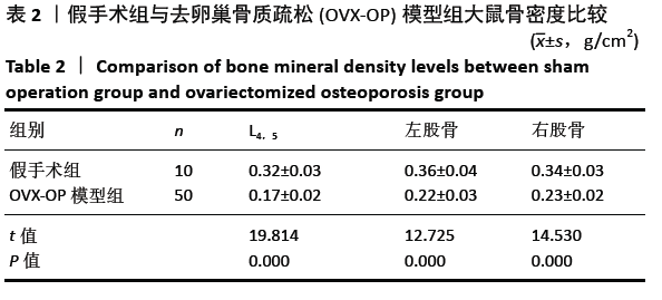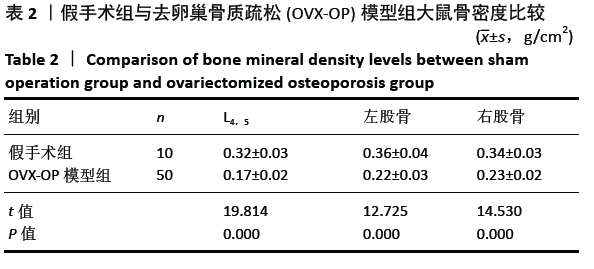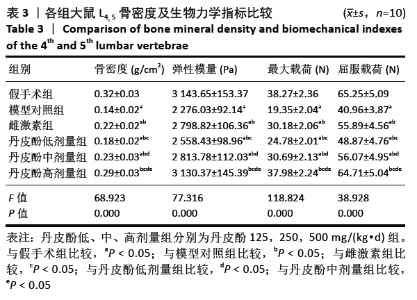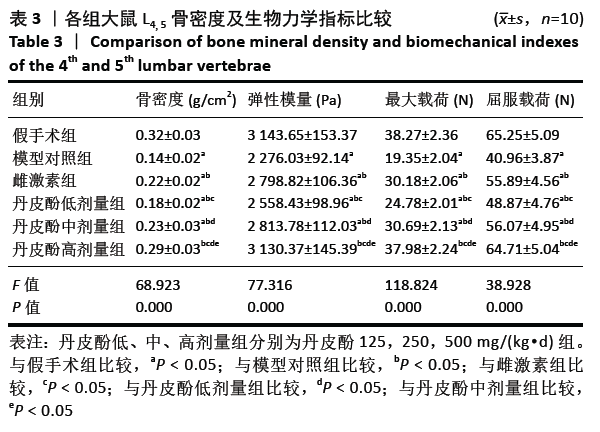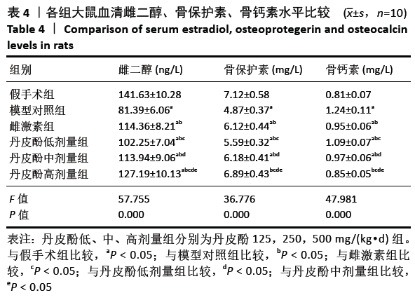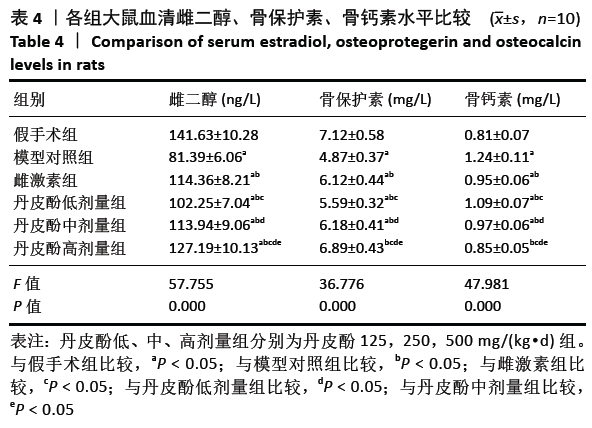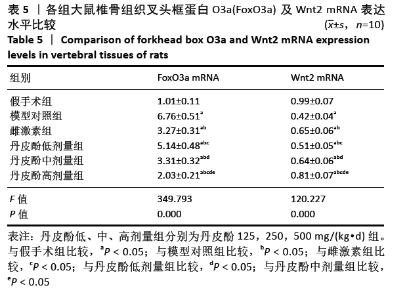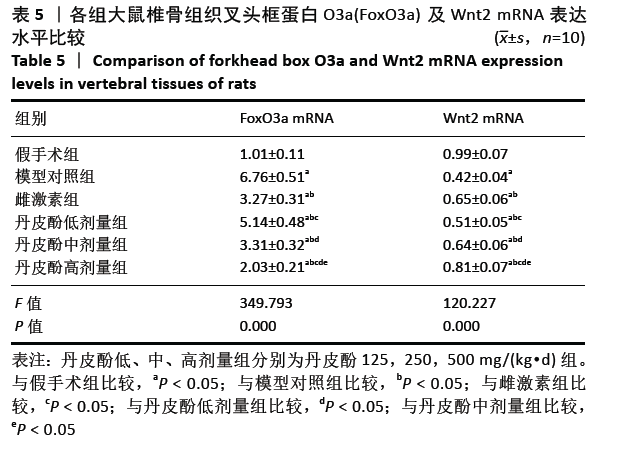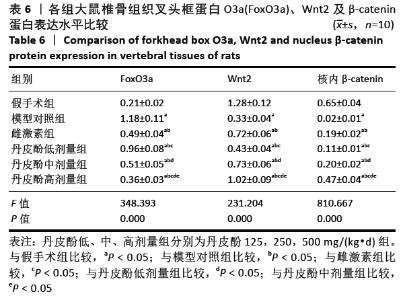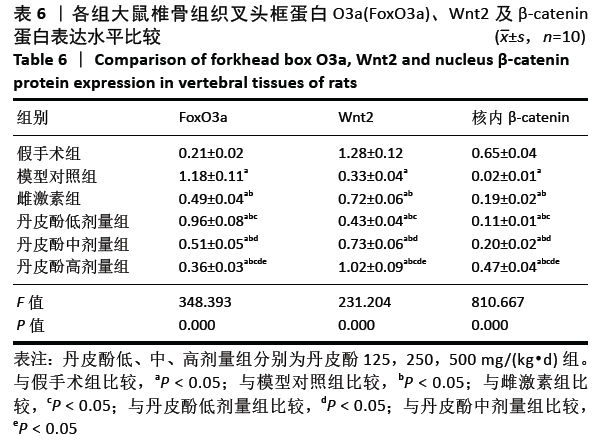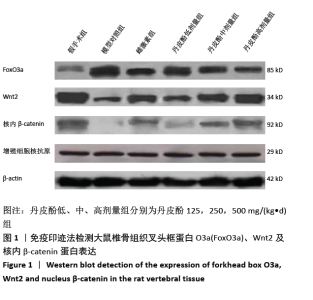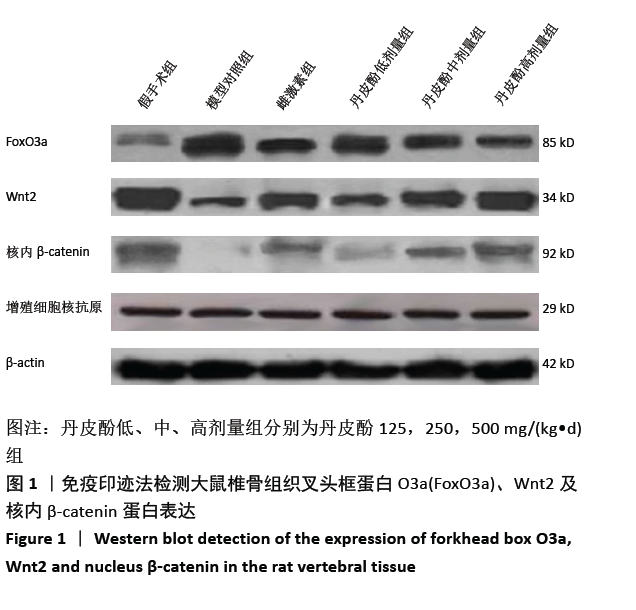[1] JIN SL, BAI YM, ZHAO BY, et al. Silencing of miR-330-5p stimulates osteogenesis in bone marrow mesenchymal stem cells and inhibits bone loss in osteoporosis by activating Bgn-mediated BMP/Smadpathway. Eur Rev Med Pharmacol Sci. 2020;24(8):4095-4102.
[2] 李绍烁, 顾一丹, 邵阳,等.CiteSpace知识图谱可视化分析中医药防治绝经后骨质疏松症[J].中国组织工程研究,2020,24(26): 4224-4230
[3] 张方雪, 禹宝庆. 成骨药物对骨质疏松疾病促成骨代谢治疗的研究进展[J]. 临床医学进展,2020,10(1):78-83.
[4] STUART AL, PASCO JA, MOHEBBI M, et al. Osteoporosis medication use among Australian women over two decades. Arch Osteoporos. 2020;15(1): 67-83.
[5] 陈云,康莉华. 丹皮酚对高脂血症小鼠的脂代谢调节保护作用及其机制[J]. 中国临床药理学杂志,2017,33(22):2273-2277.
[6] AL-TAHER AY, MORSY MA, RIFAAI RA, et al. Paeonol attenuates methotrexate-induced cardiac toxicity in rats by inhibiting oxidative stress and suppressing TLR4-induced NF-kappaB inflammatory pathway. Mediators Inflamm. 2020;2020(1):1-10.
[7] GUO J, SUETA A, NAKAMURA K, et al. Genetic and environmental factors and serum hormones, and risk of estrogen receptor-positive breast cancer in pre- and postmenopausal Japanese women. Oncotarget. 2017;8(39):65759-65769.
[8] ZHOU HM, SUN QX, CHENG Y. Paeonol enhances the sensitivity of human ovarian cancer cells to radiotherapy-induced apoptosis due to downregulation of the phosphatidylinositol-3-kinase/Akt/phosphatase and tensin homolog pathway and inhibition of vascular endothelial growth factor. Exp Ther Med. 2017;14(4):3213-3220.
[9] WU J, XUE X, ZHANG B, et al. Enhanced antitumor activity and attenuated cardiotoxicity of Epirubicin combined with Paeonol against breast cancer. Tumour Biol. 2016;37(9):12301-12313.
[10] LIU M, ZHONG S, KONG R, et al. Paeonol alleviates interleukin-1beta-induced inflammatory responses in chondrocytes during osteoarthritis. Biomed Pharmacother. 2017;95(1):914-921.
[11] OU L, WEI P, LI M, et al. Inhibitory effect of Astragalus polysaccharide on osteoporosis in ovariectomized rats by regulating FoxO3a /Wnt signaling pathway. Acta Cir Bras. 2019;34(5):1-10.
[12] LIU C, WANG L, ZHU R, et al. Correction to: Rehmanniae Radix Preparata suppresses bone loss and increases bone strength through interfering with canonical Wnt/beta-catenin signaling pathway in OVX rats. OsteoporosInt. 2019;30(7):1537-1540.
[13] 陈云,康莉华. 丹皮酚对高脂血症小鼠的脂代谢调节保护作用及其机制[J]. 中国临床药理学杂志,2017,33(22):2273-2277.
[14] WU S, ZHAO F, ZHAO J, et al. Dioscin improves postmenopausal osteoporosis through inducing bone formation and inhibiting apoptosis in ovariectomized rats. Biosci Trends. 2019;13(5):394-401.
[15] 孙国平, 罗选翔,潘彬.绝经后骨质疏松症的预防和药物联合序贯治疗[J].中国组织工程研究,2020,24(33):5385-5390.
[16] 王文志,罗丽霞,徐健,等. 骨密度与体积骨密度诊断腰椎、股骨颈骨质疏松效果比较研究[J]. 中国骨质疏松杂志,2018,24(10): 1310-1316.
[17] 耿帅,赵育林,曾凯,等. 丹皮酚的研究进展[J]. 中国新药与临床杂志,2016,35(5):310-313.
[18] 吴桂莹,亓玉玲,郝宝燕,等.丹皮酚衍生物及其药理活性研究进展[J]. 中草药,2019,50(4):1001-1006.
[19] 王晓鹏,张凯,李延坤,等. 丹皮酚影响破骨细胞转化及在治疗骨质疏松症中的作用[J]. 健康之友,2019,30(10): 150.
[20] Zhang L, Li DC, Liu LF. Paeonol: pharmacological effects and mechanisms of action. Int Immunopharmacol. 2019;72:413-421.
[21] 李倩男,王琳琳,汤剑明,等. 丹皮酚通过调控Wnt/β-catenin信号通路抑制人卵巢癌A2780细胞增殖的实验研究[J]. 中华实用诊断与治疗杂志,2017,31(11):1062-1066.
[22] LI J, LI Y, PAN S, et al. Paeonol attenuates ligation-induced periodontitis in rats by inhibiting osteoclastogenesis via regulating Nrf2/NF-kappaB/NFATc1 signaling pathway. Biochimie. 2019;156:129-137.
[23] 喻琴云,苏孝共,包琦瑛,等. 白藜芦醇对去卵巢骨质疏松大鼠Wnt/β-Catenin通路的影响[J]. 中国临床药理学与治疗学,2017, 22(6):645-649.
[24] HUANG X, CHEN Z, SHI W, et al. TMF inhibits miR-29a/Wnt/beta-catenin signaling through upregulating Foxo3a activity in osteoarthritis chondrocytes. Drug Des Devel Ther. 2019;13(1):2009-2019.
[25] 成鹏,白银亮,胡彩莉,等. 黄芪甲苷通过调控FoxO3a/Wnt2/β-catenin通路抑制去卵巢大鼠骨质疏松的作用[J]. 中国实验方剂学杂志,2018,24(15):161-166.
[26] LIU N, FENG X, WANG W, et al. Paeonol protects against TNF-alpha-induced proliferation and cytokine release of rheumatoid arthritis fibroblast-like synoviocytes by upregulating FOXO3 through inhibition of miR-155 expression. Inflamm Res. 2017;66(7):603-610.
|
